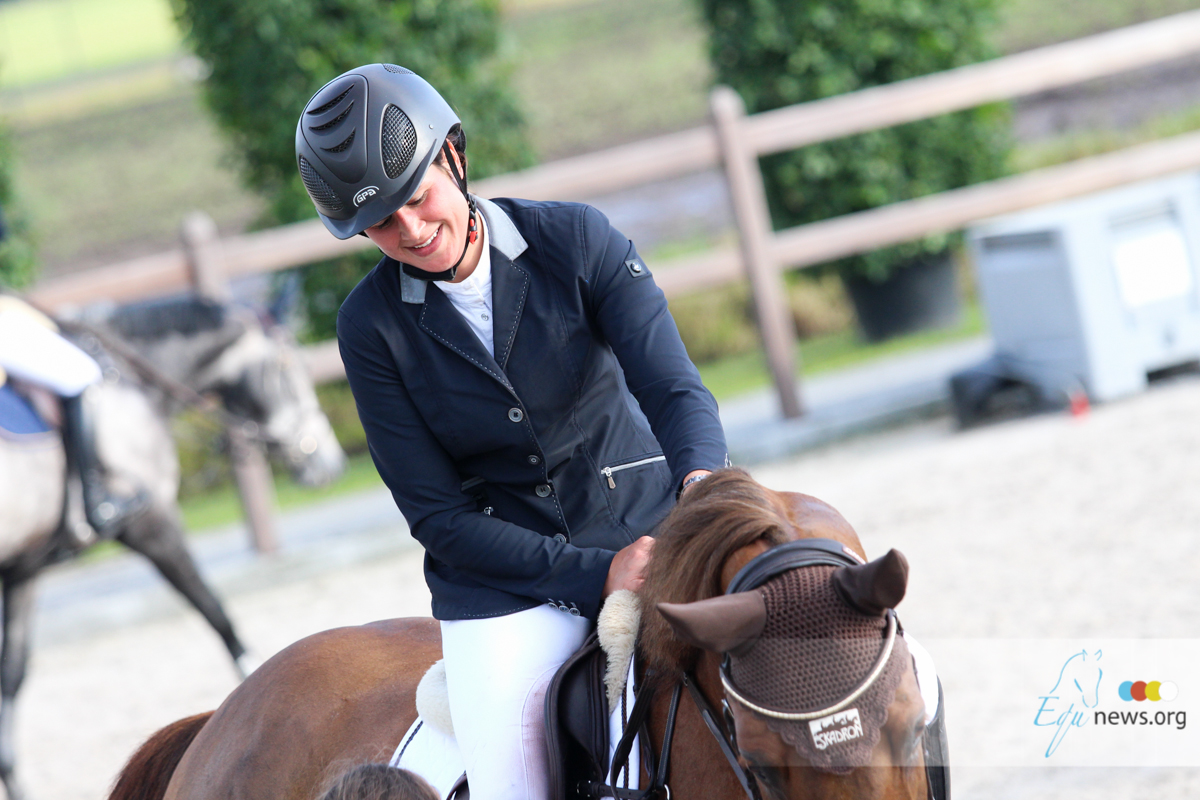The majority of horses with hind end problems are in the prime years of their life. At 10-15 years old, they still have many good years ahead if we can assist them in developing better balance and strength. Conformation issues can slow some horses down, but many are able to live comfortably and carry a rider if some time is spent focussing on building up their bodies. One of the key components to a healthy body is the hind quarters, or hind end of the horse. This massive “spring box” is essentially the horse’s primary source of propulsion. There are a few simple exercises that can benefit most horses that seem weak in the hind end. Signs to look for: Watch your horse move on his own in the field, as well as during work or riding. Some horses will have obviously wasted muscles. These horses could use strengthening exercises as well as a closer look at their nutrition, to be sure they are receiving enough nutrients to develop and maintain adequate muscle tone. Notice at left, the horse on the right has an underdeveloped hind end, so his hip bones are slightly protruding. Other signs of weakness could be wringing hocks or loose stifles. Watch your horse walk from behind and notice if his hocks are stable, or if they seem to swing as they bear weight. Lower limb joints are subjected to abnormal movement if the upper area of the hind limb is weak, or if their hooves have been trimmed out of balance long term. Horses that stumble, trip or seem clumsy may be weak and/or sore. Have your vet or body worker examine your horse before starting an exercise program if you suspect they are in pain. 5 Exercises For Strengthening Your Horse’s Hind End 1. The more supple and flexible the horse is, the easier it will be for him to build correct muscles. Stretching movements that lengthen the hind limbs create more reach, and, therefore, more strength. When the horse becomes supple, he will relax in his work, which alleviates tension, allowing him to stretch evenly and in balance. Any in-hand exercises should be achieved slowly in a calm manner. For more information on suppling ground work, check out Example 1 in my other blog post. 2. A quality rein-back that is slow and precise will build strength in the hind end. I prefer to back my horse straight up small inclines when possible. A few even steps backwards uphill during regular sessions will improve muscle tone in his Gluteus Superficialis and Biceps Femoris muscles. This exercise can be done under saddle or in-hand. Avoid pulling on the reins to back your horse, as this causes his back to drop and restricts his hind end. Instead, try using a rope around the base of his neck that you can lift to help him move more correctly, or a whip that you can lightly tap against his chest. 3. Riding over raised poles (cavaletti) is helpful for developing strength in the horse that has weak stifles or hocks. The slow action of lifting the hind legs up and over the pole will strengthen the Tensor muscle as well as the Long Digital Extensor. Both muscle groups are responsible for the stability of the stifle. Small jumps can also be of benefit, as the horse rocks his weight back onto his hind end in preparation to take off at the jump. The action of jumping is more important than jumping great heights, as a small jump can be easier to land in balance. 4. Many horses enjoy butt tucks or “Gluteal stretches.” This exercise is usually simple for the horse, as they just stand and let their human do most of the work. The goal is to create a stretch that opens up the horse’s pelvic angles, accessing the iliopsoas and gluteal muscles. Stand behind your horse (carefully!) and place your hands a few inches to either side of the base of the tail. Slowly rub your fingers down the muscle repeatedly, increasing pressure each time until you begin to notice a response. You should see your horse’s lower back lift and his pelvis tilt slightly. This massage-type movement is great to do before and after riding. 5. Leg lifting is another exercise that does not involve a lot of movement, therefore, can be utilized with horses who are on stall rest, are coming back into work, or just as an additional way to strengthen the hind end. Standing still with your horse against the rail; ask him to lift one hind leg by gently reaching towards the leg and touching it with your whip. During the learning phase your horse may try to move away from the whip, so be sure that they are confident about being touched, and assure them that you do not need them to move forward. Once he begins to understand that all you want is for him to lift his hind leg, it becomes fairly easy to request the leg lift for longer periods of time. Engaging the limb in a raised flexion strengthens the opposite leg holding the horse up in weight bearing mode, as well as strengthening the lifted leg which accesses muscles within the entire leg.
Exercises to strengthen your horse's hind end
-
categories: Lifestyle



